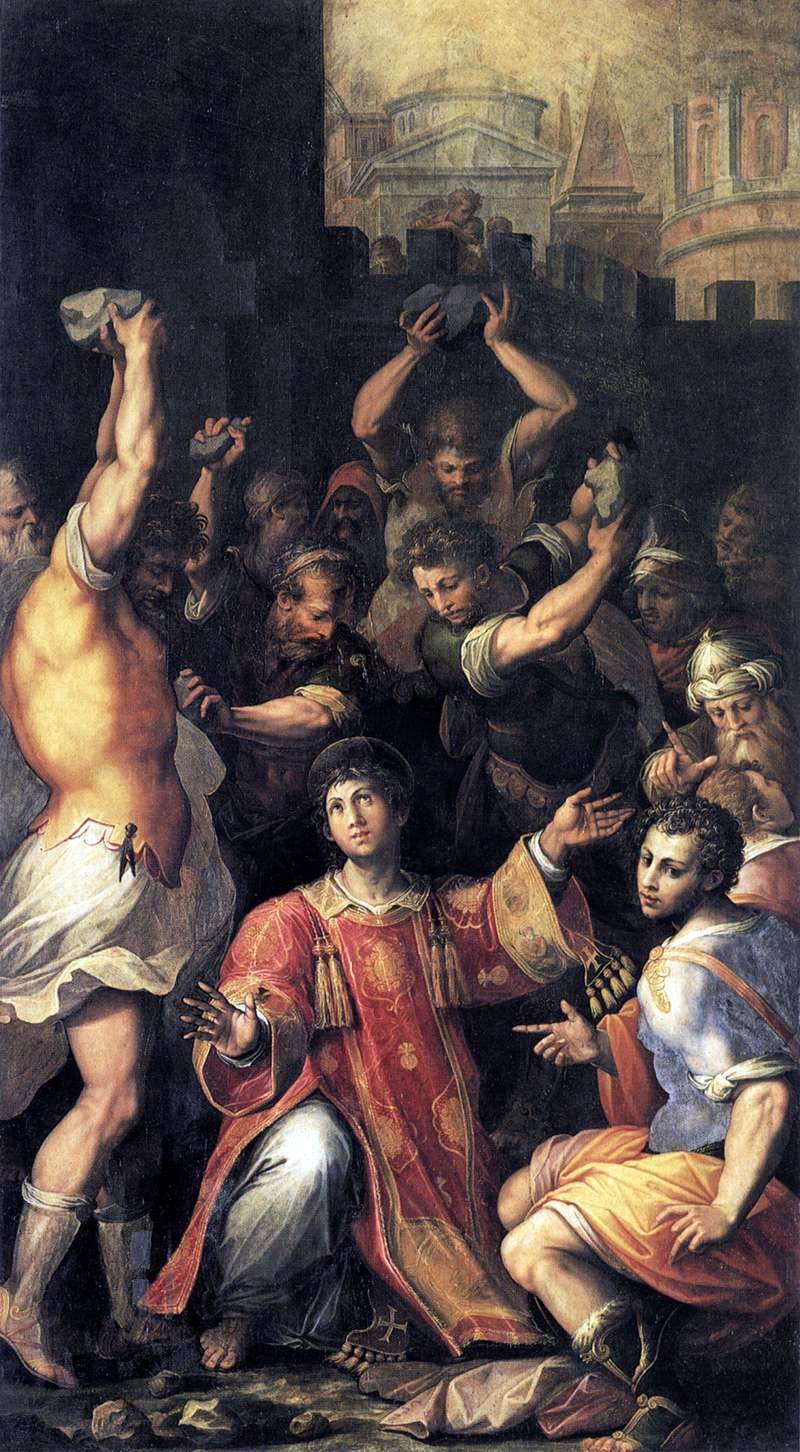
After all the merry-making, all the festivities, all the food and drinks, all the joyous gatherings we attended yesterday on Christmas day, we celebrate today the feast of St. Stephen, first martyr of the church.
We hear in the liturgy today the bloody death of Stephen, and of Jesus’ warnings of persecution, death, and hatred for his name’s sake. Is the liturgy playing kill joy during this Christmas season?
No, in fact, within 2 days, we will celebrate the feast of the Holy Innocents. The feast of the Holy Innocents commemorates the massacre of young children in Bethlehem by King Herod the Great in his attempt to kill the infant Jesus (Matthew 2:16–18).
On the contrary, the Church’s long tradition of celebrating the memorial of St. Stephen after Christmas does not serve to demote Christmas, but to continue it. The liturgy after Christmas wish to manifest more clearly that when Jesus comes to dwell in our hearts, his incarnation in our lives cannot remain without effect. Jesus was born into this world in order to teach us how to die to the values of the world and live in the values of God’s kingdom. St. Stephen’s faith-filled martyrdom focuses our attention on this truth.
At my reflection last Christmas midnight mass, I mentioned that Christmas is a defiance! The more the world is plunged into senseless impunity of killings and violence, the voice of Christmas shout much louder for peace and justice. The more the world is plunged into hunger and poverty, the aspiration of Christmas for sharing of creation’s resources for all becomes greater and greater. The more the world is plunged into materialism and vanity, the proclamation of the spirit of Christmas which is love, forgiveness and acceptance of all becomes stronger and stronger. As the world is plunged into sadness and misery, the challenge to spread the joy of Christmas all the more become urgent especially among the abandoned, homeless and lonely.
Our times is not much different during the time of St. Stephen. As we spent the past few days in Christmas revelries, many innocent people continue to be arrested, tortured and killed due to their political and religious beliefs and actions in behalf especially of the poor, oppressed and marginalized in society.

The feast St. Stephen in the middle of the Christmas season reminds us that the real Christmas is still far from reality in our world today. Until there are people who are persecuted, tortured, unjustly arrested and killed, we will not stop denouncing the evils in our society and personal lives. As long as there are injustice, oppression and killings, we cannot silence the voice of Christmas proclaiming God who dwelt amongst us especially among the poor, abandoned and persecuted.
I remember in 2015, around Christmas time, we displayed gruesome photos of the extra-judicial killing around the shrine. The killings were justificed by the government as a collateral result of its bloody war on drugs. Many of the devotees who went to the shrine were shocked when they saw the pictures although many also expressed support to the photo gallery. On social media, we were called all sorts of names—bastard priests, demons from hell, members of the yellow cult, rapists and pedophiles, coddlers of drug lords, thieving hypocrites playing politics—many of them coming from the devotees. It is utterly distressing that in a Christian country like ours, the killings is tolerated, even supported by a majority of people who are mostly Catholic.

St. Stephen’s is one the first deacons of the church. As a deacon he had a twofold task. He was assigned to the service of the tables, the “service of love” to the poor, so that the Apostles would have more time for preaching. But since he also the gift of preaching, he should also perform this ministry of truth. And Stephen, trusting in Jesus, devoted himself whole-heartedly to these tasks. He was stoned to death because his preaching of Jesus as the Son of God was considered blasphemy.
But St. Stephen make no compromises concerning the truth. He proclaims the Jesus who revealed himself and whom he had come to know. But he does not proclaim this truth by way of violence or hatred, but in love and in self-giving. Until the last moment he forgives the men who kill him. As Jesus prayed for those who killed him, so St. Stephen prayed, “Lord, do not count this sin against them!” And his witness, his death was fruitful for the Church. The remembrance of this witness, for example, probably helped Saul later to accept Christ’s message, and thereby to become the great Apostle Paul.
The example of St. Stephen shows us that the world needs the witness of the truth in love and in self-giving, despite the violence in the world today. This is an essential implication if we would take seriously the challenge of living out the true spirit of Christmas.


